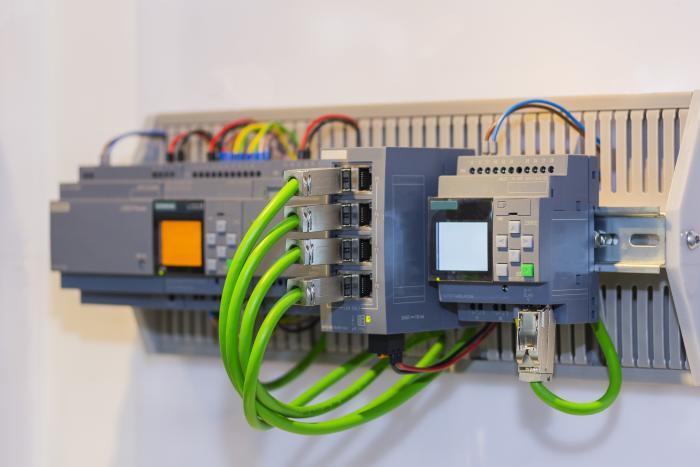Latest Advancement in PLC Technology
PLCs, or Programmable Logic Controllers, have been in use in one form or another since the proliferation of modern manufacturing. In fact, PLCs have proven so vital that they have ostensibly helped to replace many of the strictly manually executed processes in thousands of plants across the globe.
Unlike many other industrial components, the PLC does not appear destined to fade from use or memory; instead, this rugged, industrialized computer may well continue to serve as the primary operator of choice for millions of industrial processes. In this article, we’ll examine some of the leading trends being pursued in the PLC space.

Greater Connectivity with PACs
There was a time when the role of the PLC was far narrower in scope than it is today; PLCs, traditionally speaking, relied on proprietary programing and were used to control field devices. PACs (Programmable Automation Controllers) on the other hand, used much more standardized and modular programming languages and were relied upon to control entire production lines or plants.
Today, those lines of differentiation are arguably much more blurred, as PLCs can be found controlling a much greater variety of automation equipment and processes. Additionally, the number of programming languages used in PLCs - which used to roughly equal the number of PLC manufacturers - are fewer in number and are much more standardized from one company to the next.
Future Proofing PLCs for Enhanced Applications
Programming standardization is beneficial for several reasons, not least of all for the technicians who need to learn and understand the programming languages they work with (standardized programming languages means a PLC technician’s skills can be more widely applied from one manufacturer or industry, to the next). From a technology point of view however, standardization increases the potential applications that a PLC can be used to perform. Like computers, PLCs have become much more powerful over the years – it's therefore arguable that a lack of standardization could mean that modern and future PLCs would not be used to their potential. Further, greater standardization allows a manufacturer to consider more important aspects of PLC technology when selecting a PLC such as how easily it can accommodate I/O expansion, how fast it is, and how much data from operations it can process.
Pulling More Usable Data
The Internet of Things, or IoT, is already beginning to reshape the manufacturing landscape. And while IoT technologies permit the collection of a vast amount of data from equipment and locations in real time, data collection of this magnitude can impact the performance of a traditional PLC. Consider for a moment how resource intensive it is to collect data multiple times a second from a plant full of machines that operate on two dozen axes, summarizing it, and sending it over the network. It quickly becomes clear that advancing the speed and processing capabilities of modern PLCs to handle such high informational loads is a top priority for manufacturers.
Edge Computing
More and more, vision technologies are being used for training and error detection functions in industrial processes. Machine learning algorithms are used to assess captured images and look for things like tool degradation or to ensure precise part installation. Edge computing or dedicated PLC modules offer an ideal platform for hosting these algorithms.
Designed to Withstand Even Harsher Environments
PLCs are already characterized as rugged, industrial computers capable of withstanding the less-than-ideal environmental conditions normally present in a manufacturing facility. PLC manufacturers are continuously pushing the envelope in terms of bringing to market even more robust PLCs that can continue operating in the face of meteorological events like extreme cold, storms, flood, and heat waves. In these PLCs, electronic signals are being swapped out for fiber signals so that the performance is maintained even in locations with significant electrical noise.
Thanks in part to the IoT (as discussed previously), PLCs can now be installed in remote locations away from electrical interference, something that can be of great benefit whenever there are sensitive processes that require precise actions and monitoring.
PLCs are Evolving, Not Fading
PLCs have indeed been around for decades, but the modern PLC and by extension, the PLC of tomorrow, are far beyond the small industrial computer that changed manufacturing in the mid to late 21st century.
It is fascinating to see how these computers, computers that are responsible for process automation, plant efficiency, and more, are still relied upon for even the most advanced manufacturing processes and functions. If you’d like to learn more about PLCs and how to program them, consider checking out the PLC Technician Program at George Brown College.
